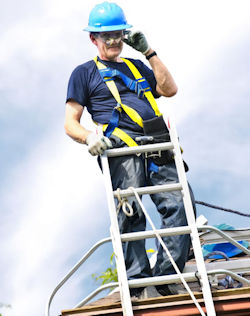Precautions
- Do not move or shift a ladder while a person or equipment is on the ladder.
- An extension or straight ladder used to access an elevated surface must extend at least 3 feet above the point of support.
- Do not stand on the three top rungs of a straight, single or extension ladder.
- A ladder placed in any location where it can be displaced by other work activities must be secured to prevent displacement, or a barricade must be erected to keep traffic away from the ladder.
- Be sure that all locks on an extension ladder are properly engaged.
- Do not exceed the maximum load rating of the ladder. Be aware of the ladder's load rating and of the weight it is supporting, including the weight of any tools or equipment. Never load ladders beyond the maximum intended load or beyond the manufacturer's rated capacity.
- Be sure the load rating can support the weight of the user, including materials and tools.
- Avoid using ladders with metallic components near electrical work and overhead power lines.
For a complete course on ladder safety, take OSHAcademy course 603 Stairway and Ladder Safety.
For more information on ladder safety see OSHA Publication 3625, Falling off ladders Can Kill: Use Them Safely, OSHA Publication 3660, Reducing Falls in Construction: Safe Use of Extension Ladders, and OSHA Publication 3662, Reducing Falls in Construction: Safe Use of Stepladders.
Knowledge Check Choose the best answer for the question.
3-5. You see a worker climbing an extension ladder with only one rung above the point of support. What do you tell the worker?
You forgot to answer the question!

